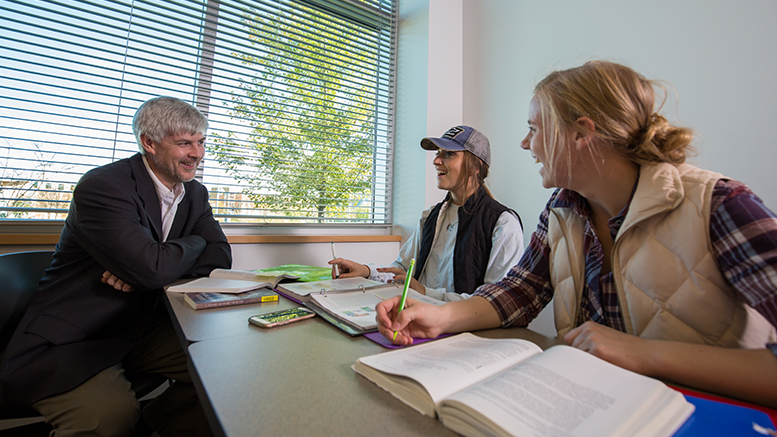Many community colleges have been in their communities for decades, and some take it for granted that campus stakeholders, prospective students and their families, and the public at large understand who they are and what they do.
But like entities of all kinds, community colleges are becoming increasingly aware of the need to forge a consciously defined identity for themselves, particularly as the mission of two-year institutions becomes more tightly focused on students gaining degrees or other specific credentials, rather than just simply open access institutions for anyone. This has prompted them to undertake sometimes controversial but almost always rewarding rebranding campaigns.
“It’s no longer about getting students to the door — it’s about getting them to the door, through the door and all the way to the end,” says Debra Halsey, executive director of the National Council for Marketing & Public Relations (NCMPR), an affiliate council of the American Association of Community Colleges. “They’re viewing the process as a funnel that follows students from their initial inquiry, to applicant, to enrolled student, to graduate who has achieved their goals.”
This article comes from the February/March issue of AACC’s Community College Journal.
Messaging and branding is following students along that funnel, Halsey says.
“Marketing is playing a key role not just in communicating with prospective students,” she says. “Marketing is increasingly involved in retention efforts, in messaging to current students, to keep them engaged, enrolled and successful. … The community college completion agenda, with its focus on retention, is contributing to this shift.”
Brand statements that integrate success and completion language are finding their way into granular communications from counterintuitive sources like registration and financial aid, Halsey says.
“All the way down to course schedules, calendars, academic handbooks and orientation,” she says. “Marketing is also being called upon to ramp up internal employee communication, establishing an internal culture that focuses not just on student access but student success.”
Social media has become an increasingly important channel for reaching all of these audiences, ensuring that student inquiries are answered properly and keeping students engaged, while emails and texts also are important avenues to communicate with current and prospective students. And the use of short videos has become more commonplace. “The trend has been a lot more publications and outreach materials, and they’re moving from print to online,” Halsey says.
The why and the how
College logos and other elements of branding resonate in part because college is such a formative time in people’s lives, says Jordon Sharp, chief marketing and communication officer at Dixie State University in St. George, Utah, whose university undertook a rebrand and who delivered a webinar on the subject for NCMPR in November.
“People meet their spouses, friends and mentors for their careers, and they discover their passions,” Sharp says. “They take all those moments and consolidate them [emotionally] around those collegiate brands and logos. It’s important that our branding as a college is representative of our ideals, and of the mission we’re portraying and aiming to achieve.”
Brands set colleges apart from their competitors, which of course number in the thousands. Rebranding comes about for a number of reasons, and can be desirable even when a school and its sense of mission are both strong, Sharp says.
“There are several reasons people would consider a rebrand — you’ve changed your model of school, you’re not standing out, you have programs for outdated industries, or there’s been a market change,” he says. “Dixie State was suffering from several if not all those things. It was hurting us.”
Six points to a successful rebrand
Sharp shared several elements that he considers key to a successful rebrand, which he also covered during his NCMPR webinar:
Base decisions on hard data. “Branding can be very beneficial, but it can be very difficult,” Sharp says. “There has to be a good reason to rebrand.” Dixie State performed extensive surveys of students, faculty, staff, alumni and the community, as well as focus groups with 300 people. “It was overwhelming that our brand was unpopular and needed to be modified.”
Build a strong coalition of support. Ideally, a rebrand centers around a representative committee from each group of stakeholders in the college who communicate with their constituencies and garner feedback.
But don’t undertake rebranding by popular vote. This can result in “an identity that has multiple meanings, with no one looking at the details,” Sharp says.
Tap outside professionals. They can help with practical details like estimating costs, making the strategy work and details like figuring out how the proposed logo will look on a T-shirt. “I would definitely suggest getting an outside agency to bring perspective, and legitimacy, and structure to the process,” he says.
Strike a balance in your rollout. “I suggest a mix between a press conference and a larger event,” Sharp says. “If you do it at a major event, like a basketball game, you can’t really hear it. But if it’s at a closed event, people don’t feel like they got to take part.”
Promote it to death. Show that the new logo and other elements of the brand are here to stay, he says. “Put up signs. Put up a billboard in the middle of town,” he adds. “You have to stake it into the ground, once you’ve done your job properly.” Dixie State put a handpainted bison statue in the middle of campus. “Everyone knew we had rebranded,” Sharp says.
Read the full article online.
Register today for the AACC annual convention April 28 to May 1 in Dallas.

